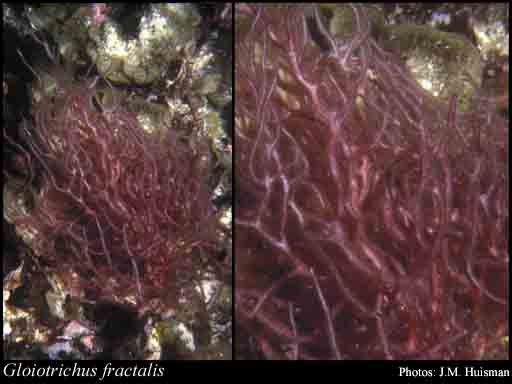- Reference
- Eur.J.Phycol. 74-76, figs 1-17 (1994)
- Conservation Code
- Not threatened
- Naturalised Status
- Native to Western Australia
- Name Status
- Current

Scientific Description
Habit and structure. Thallus to 17 cm high, pink to deep red, mucilaginous, with several percurrent axes and lateral branches from all sides, often appearing alternate-distichous or unilateral. Axes terete, lightly calcified; main axes 1–2 mm in diameter; lateral branches to 1 mm in diameter. Medulla with 5–15 filaments as well as adventitious filaments from basal cells of cortical fascicles; cells elongate, 90–120 × 12–15 µm, to 180 µm in diameter in older portions. Cortical fascicles subdichotomously branched; distal 2–5 cells unbranched; distal cells to 15 µm in diameter, with a conspicuous central pyrenoid, often bearing 1 or 2 glandular cells.
Reproduction. Spermatangial branches on subterminal cortical cells, 4 or 5 cells long; spermatangia 3–4 µm in diameter. Carpogonial branches with lower cells often secondarily branched. Carposporophyte to 250 µm in diameter.
Distribution. Occurs subtidally at depths of 6–20 m in the Houtman Abrolhos, W. Aust.
Habitat. G. fractalisgrows on coral and coral rubble.
Distribution
- IBRA Regions
- Geraldton Sandplains.
- IBRA Subregions
- Geraldton Hills.
- IMCRA Regions
- Abrolhos Islands.
- Local Government Areas (LGAs)
- Greater Geraldton.